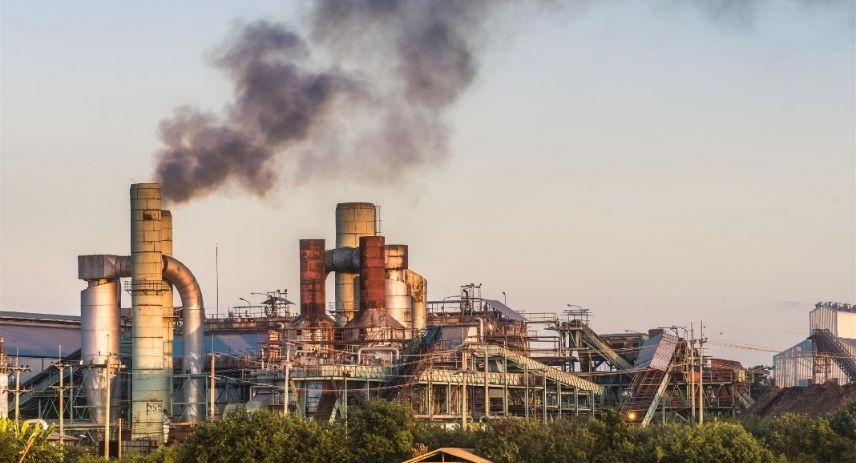
We all know that it is not possible to stop global warming overnight or even in the coming decades. But, we can slow the rate of global warming by reducing human emissions of heat-trapping gas and soot (“black carbon”).
If all of today’s human emissions of heat-trapping gases were stopped, earth’s temperature would continue to rise for several more decades as ocean currents carry excess heat stored in the Earth’s depths to the ocean’s surface.
Once this excess heat is released into space, the earth’s temperature will stabilize. Experts also believe that this additional warming from this “hidden” heat will further increase the temperature. So, natural processes will begin to slowly remove excess carbon dioxide from the atmosphere without additional human influence, and global temperatures will gradually drop.
So, why are we so concerned about carbon emissions?
When we talk about carbon emissions, we pay special attention to carbon dioxide or CO2. Naturally, CO2 is released into the atmosphere in several ways. The largest source of natural carbon emissions is carbon dioxide exchange between the ocean and the atmosphere. Animals and plants also release CO2 during respiration (oxygen inhalation, CO2 exhalation). And as these plants and animals decompose, the organisms in the soil breathe, producing energy and releasing more CO2 into the atmosphere.
Generally, nature balances most of these emissions. Plants absorb carbon dioxide through photosynthesis, and the ocean absorbs as much carbon dioxide as it releases. Carbon circulates in our air, water, and soil as a continuous process that sustains life on earth.
Emission reduction is the basis of a successful sustainability strategy, but setting goals is only one step in the process. Achieving net-zero emissions requires investment, innovation, and efforts.
There is no one size fits all. But businesses and governments can take action. A successful transition starts with identifying the most significant opportunities in your organization. When a company promises a more sustainable future, it must look at the sum of its parts.
Here’s where it gets tricky.
People don’t play by the same rules as nature. Extracting, refining, transporting and burning fossil fuels such as coal, natural gas and oil releases additional carbon and other greenhouse gases into the atmosphere. We also cut down large areas of trees that absorb carbon dioxide to harvest wood to make room for agriculture and new development or to create new products. When these trees burn or rot, they release more CO2. By destroying forests, we are also removing natural systems that absorb and store carbon.
What can we do?
It’s no secret that lower levels of atmospheric carbon is a hot topic around the world. Like most things in life, there are two ways to solve a problem. The first and safest option is to avoid the situations that cause them in the first place. The second is to undo what has already been done. Applying this idea to carbon emissions can reduce or offset carbon dioxide emissions.
How you can make a difference
From turning off lights when you leave a room to riding a bus, you can reduce the amount of floor space you occupy. Take a look at how you shop and make a conscious effort to make smarter choices. Buy carbon offset products that make you happy but last longer. Buy from companies that advocate reducing your own footprint when shopping. By shopping at a company that cares about you, you also show that you care about them.
Maximizing energy efficiency of building systems
Whether you own an individual building or a large investment portfolio, the starting point for developing a net-zero strategy is to establish baselines for current performance and the characteristics of existing buildings. Data is essential for accurate and in-depth analysis of building operations and equipment – across brands, systems and technologies. You will be able to evaluate and compare more accurately, even between different properties. Specific and reliable information informs better business decisions, such as equipment investments and upgrades.
The next step is to identify energy efficiency opportunities in all building systems. Heating, cooling and lighting are usually the largest energy consumers in a building. The challenge is to create a safer and more comfortable environment that promotes resident productivity, well-being and well-being while maximizing energy efficiency. Moreover, balancing comfort and energy balance is not the same challenge from one year to the next. Utilities, weather, and occupancy are constant variables. For example, facility owners and managers faced unique operational challenges during the ongoing COVID 19 pandemic. Many need to address indoor air quality through building ventilation systems, increased outdoor air circulation, or the installation of air filtration and purification systems, resulting in increased energy consumption.
Energy management and information systems (EMIS) allow owners, operators, and facility managers to control comfort, system performance, and consumption proactively. Systems often leverage artificial intelligence and machine learning capabilities to uncover hidden energy waste and provide predictive and optimized control.
Conclusion
The earth cares for itself. However, if it is too overloaded, it can start to get out of balance. By taking action to reduce carbon dioxide emissions, we can rebalance the planet and continue to enjoy and appreciate its beauty for years to come.
Climate Carbon is a forerunner when it comes to influencing life and the environment. The company helps people and the environment in a variety of ways. This includes financing, implementing, and administering carbon reduction and offsetting programmes all over the world to assist individuals and organizations in taking responsibility for their carbon footprint offset. To know more about the services and details, check climatecarbon.com.